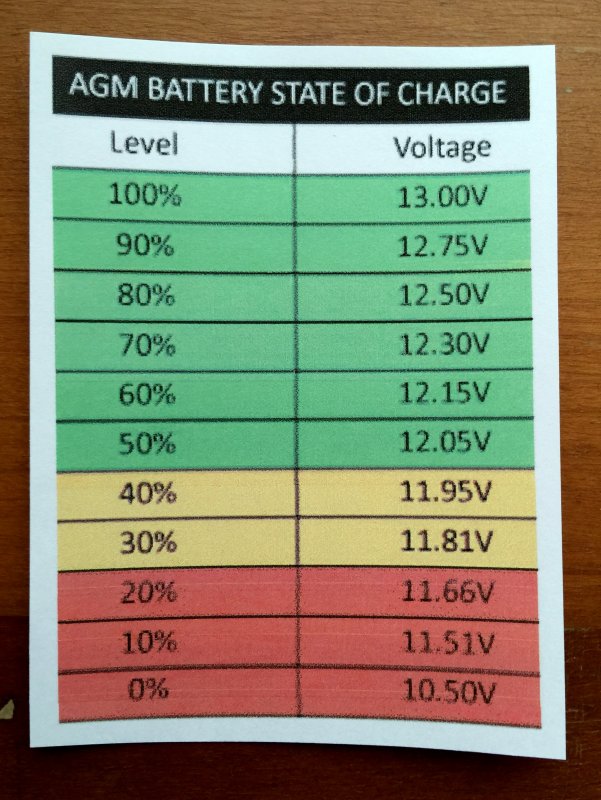New to solar charging and closely monitoring battery use for first time and have so many questions but one glaring question is around the use of the battery power and recharging and the difference between a full and discharged battery..............
Any and all information is greatly appreciated - thanks in advance
- In my observation and research I notice the difference between a full and empty battery is 1 volt (in the case of flooded lead acid because do not want to go below 50%) – is that accurate?
- Monitor on charge controller shows the battery bank at 50% when at 12V and full at above 13V (usually peaks at 13.2V)
- If above is true I am to educate myself and understand when you have a 12 volt battery but you only get to use 1 volt before it needs recharging – why do you only get 1 volt? Is there misconception or perspective I am missing and how can I educate myself on this?
- Again, trying to gain perspective, how can 1 volt last long enough to power anything for any period of time?
Any and all information is greatly appreciated - thanks in advance




